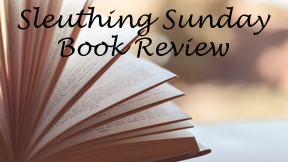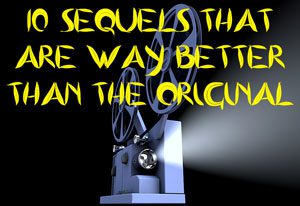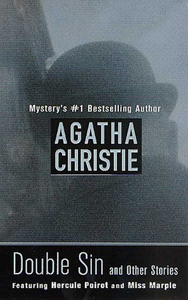“Double Sin and Other Stories” (1961) collects eight Agatha Christie yarns published in magazines from 1925 through 1960. With four Poirots and two Marples, the volume mainly shows Christie establishing her formulas and her sleuth’s styles.
However, “The Dressmaker’s Doll” is an enjoyably wild departure. For my thoughts on that and “The Last Séance,” see my review of the 2019 “Last Séance” collection.
A traditional English … jewel theft
But I mainly came for “The Adventure of the Christmas Pudding” (a.k.a. “The Theft of the Royal Ruby,” 1960). Like Poirot, I wanted a taste of a traditional English Christmas.
(SPOILERS FOLLOW.)

“Double Sin and Other Stories” (1961)
Author: Agatha Christie
Genre: Mystery short stories
Series: Hercule Poirot No. 38
Setting: England, 1925-60
It’s the book’s longest story at 52 pages, mixing a big-manor theft with descriptions of mistletoe, snow, midnight mass and hearty meals. Poirot’s stomach approves, and he compliments the kitchen staff.
Poirot gets there via an invitation from a friend of a friend or something; it doesn’t matter, we’re just glad he’s there. Christie says of the younger generation that it’s best to let them do their own thing, rather than try to control them. The seasons change in more ways than one in “Christmas Pudding,” but it’s the traditions that shine through.
Too-smart Poirot?
The collection starts with another Poirot yarn, “Double Sin” (1929), a rare Christie mystery that does not make logical sense. An antiques dealer stages a theft of her goods in order to get paid for them twice, but the story never explains why the buyer is willing to pay twice. It might’ve made sense if the scammer was going after insurance money.
“Wasps’ Nest” (1929) is slightly better. Poirot visits a friend and deduces something rather extreme in the man’s psyche that both solves the case and helps the friend. It’s filled with convenient coincidences, but Christie tries for a character piece.
“The Double Clue” (1925) is similar to “Double Sin” in that Poirot uses logic that clicks with what really happened — but only because Christie writes it this way. A robbery scene includes two clues, both pointing to the same person.
Poirot deduces that the suspect is not guilty yet he also was not framed with both clues – no framer would leave two. So one object is the framing clue, and one object was genuinely left behind. But come on, a framer could have left two clues, and a thief could have left two clues. Poirot should be shown to guess wrong every now and then.
Armchair detective
“Greenshaw’s Folly” (1959) is a solid manor mystery that starts with a familiar face: Raymond West, nephew of Miss Marple. Here we learn more specifics of his authorial career. He gets six autograph requests in the mail daily, but this only makes him a mid-level success. And detective novels are not his thing.

West’s female cousin is on the scene at the titular sprawling manor, then Marple comes in to solve the case from her living-room chair. It’s a decent fakery-driven mystery, but we don’t get enough description of the titular house. It’s just big and drafty, but that would make every house of its era a “folly.” I wanted architectural quirks.
“Sanctuary” (1954) respectably closes the book, again with “Folly’s” structure. A friend of Marple’s experiences a weird case, then Marple solves it from her armchair. You can’t go wrong with a dying man choking out mysterious final words on church steps.
Christie provides a neat bit of history: Churches were once sanctuaries under English law – even the police could not arrest a suspect in a church, if he asked for sanctuary there. While the law had changed, the tradition remains at the time of the story.
And hey, churches fit in with Christmas. So come for “Christmas Pudding,” but stay for the whole feast of “Double Sin and Other Stories.”
Every week, Sleuthing Sunday reviews an Agatha Christie book or adaptation. Click here to visit our Agatha Christie Zone.

